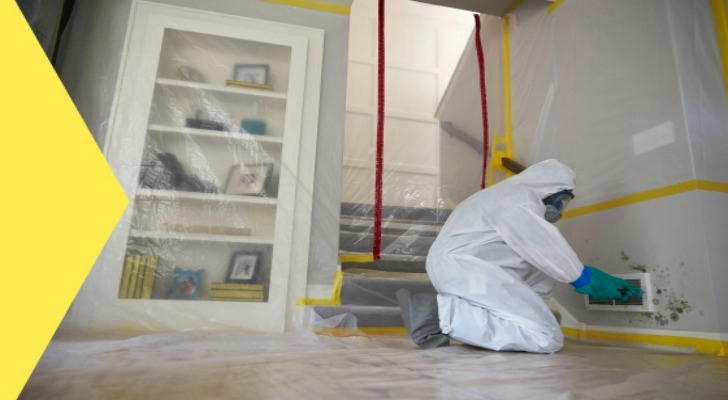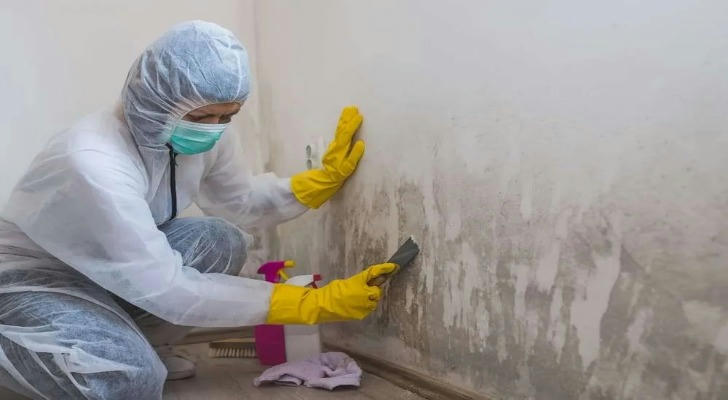Why Consider Flood and Mold Remediation Services?
Flood and Mold Remediation
After severe storms or flooding, many American households face not only structural damage but also hidden health risks caused by mold growth. These issues often lead to increased medical bills, rising energy costs, and reduced home value. Fortunately, multiple government-backed programs provide institution-supported remediation services with no additional financial burden for eligible residents.
Get the flood and mold remediation information you want through the following channels.

Why Consider Flood and Mold Remediation?
1️⃣ Energy Savings
Water damage and mold often degrade insulation and HVAC efficiency. According to the U.S. Department of Energy (DOE), improving home moisture control can cut energy bills by up to 30%. For example, in Louisiana, households that completed remediation programs saw average savings of $350 annually on heating and cooling.
2️⃣ Health and Comfort Improvements
The Centers for Disease Control and Prevention (CDC) reports that mold exposure worsens asthma and allergies, especially for adults over 50. Post-remediation surveys in North Carolina showed a 40% decrease in respiratory complaints among treated homes.
3️⃣ Home Value Enhancement
Flood and mold issues can reduce property value by 7–15%. Restoring affected areas through certified programs often recoups these losses and even increases resale appeal. A Texas homeowner who participated in the Weatherization Assistance Program (WAP) noted a 12% property value increase within a year.
4️⃣ Government and Institutional Incentives
Federal agencies such as FEMA, HUD, and state-level health departments provide funding and technical support for remediation projects. Many programs also offer tax credits or subsidies, making it easier for homeowners to maintain safe living environments.
What Programs Are Available?
1. FEMA Individual Assistance Program
🔹 Service Scope: Flood damage assessments, mold remediation, structural drying, and basic repairs.
🔹 Eligibility: Available to residents in federally declared disaster areas, including renters and homeowners.
🔹 How to Apply: Online application at disasterassistance.gov or via FEMA helpline.
2. HUD Healthy Homes Program
🔹 Service Features: Focuses on mold control, moisture barriers, and improving ventilation.
🔹 Eligibility: Income-based, prioritizing families with children under 6 or elderly residents.
🔹 Application Process: Contact local HUD-approved agencies for assessment and enrollment.
3. Weatherization Assistance Program (WAP)
🔹 Scope: Includes mold remediation linked to insulation and HVAC upgrades.
🔹 Income Guidelines: Targets households at or below 200% of the federal poverty level.
🔹 Local Contacts: Coordinated through state energy offices and community action agencies.
How to Apply for Flood and Mold Remediation?
Various resources can help you find the right service plan.
Such as: flood remediation programs, mold removal assistance, weatherization grants, FEMA disaster relief, HUD Healthy Homes initiatives
Eligibility Requirements
U.S. residency or legal occupancy proof
Income documentation (pay stubs, benefits statements)
Proof of property ownership or landlord consent
Evidence of flood/mold damage (photos, inspection reports)
Application Process
Eligibility Review – Submit ID, address, and income proof
Program Matching – Agencies identify applicable programs
Document Upload – Provide damage and residency documentation
Service Scheduling – Coordinate appointments with certified contractors

Real Success Story: Flood and Mold Remediation
Following Hurricane Ida, Maria Johnson, a 58-year-old from Louisiana, struggled with persistent mold in her home. After enrolling in FEMA’s remediation program, her residence was professionally treated, and damaged insulation replaced. Post-remediation, Maria reported fewer allergy symptoms and saved over $400 yearly on energy bills. This program required no additional payment beyond her initial registration.
Similarly, in Pennsylvania, veteran James Harris took advantage of the Weatherization Assistance Program to seal basement leaks and address mold growth. His family experienced improved air quality and reduced asthma attacks among children, showcasing the health benefits and economic relief these services can provide.
Frequently Asked Questions About Flood and Mold Remediation
Q1: Are there any out-of-pocket costs?
→ Some applicants may incur small fees depending on income and program rules, but many qualify for significant financial assistance.
Q2: What documentation is needed for application?
→ Typical documents include photo ID, proof of income, recent utility bills, homeownership proof, and damage evidence.
Q3: How long does the remediation process take?
→ The timeline from application to service completion usually ranges between 2 to 8 weeks, varying by state and program capacity.
Q4: Can I choose my service providers?
→ Programs typically partner with certified contractors to guarantee quality, though some allow limited provider choices.
Q5: Will applying affect my taxes or public benefits?
→ Usually, assistance is not taxable income and does not impact benefits. It’s advisable to consult local tax advisors for specifics.
Start Your Flood and Mold Remediation Journey Today
By engaging with government-supported programs, eligible residents can restore their homes, improve health conditions, and reduce utility expenses. These initiatives provide important resources to avoid financial strain while enhancing living standards.
Act now to explore available options and apply for support before issues worsen.
Flood and Mold Remediation Program Information
Additional Resources:
- FEMA Disaster Assistance
- HUD Healthy Homes Program
- DOE Weatherization Assistance Program
- CDC Mold and Indoor Air Quality
